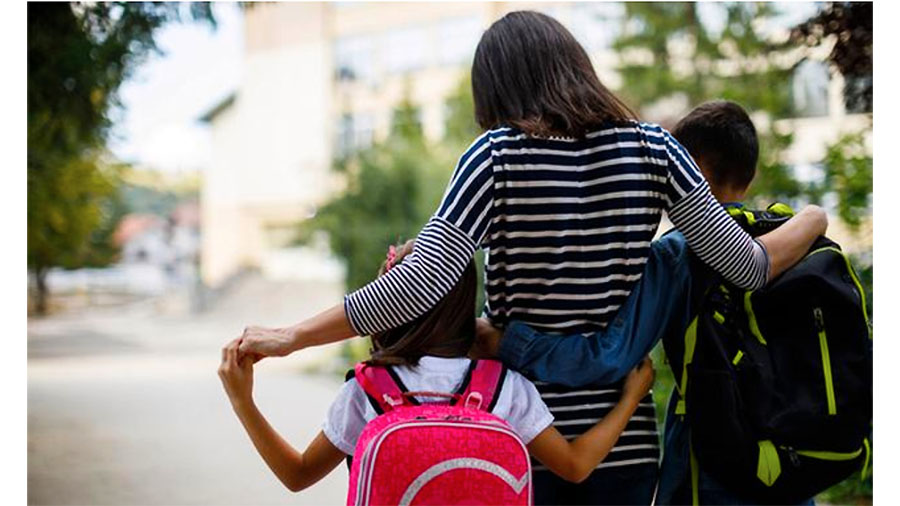The 2021 school year will see a return to normalcy with in-person school resuming nationwide, according to KPMG’s “Welcome To The New “Back To School” survey.
The survey of 1,000 consumers found that the average spend per student would be up to $268 per student compared to $247 in 2020, representing a gain of 8.5 percent. The increase reflects a change in category spend and a variation in educational cohort spending. Also, consumers are expecting higher costs due to inflationary pressures.
“The jury is still out on where retail pricing will be for back-to-school merchandise. Although consumers expect net prices to go up, they also think there will be more competition for their dollars, potentially increasing promotional activities,” said Scott Rankin, principal, National Advisory & Strategy Leader, Consumer & Retail, KPMG U.S.
Spending for pre-school and college students is expected to spike 32 percent and 13 percent, respectively, compared to 2020. Spending for middle school and high school students is only expected to be up 3 and 4 percent respectively.
The survey indicated that in some ways, the 2021 back-to-school season would return to traditional in-person learning categories, with increased spending in key retail categories: footwear (up 21 percent), apparel (up 14 percent) and school supplies (up 16 percent). Respondents expect to spend less on computers and study-related furniture in 2021 than in 2020 during the height of the pandemic.
“The prior back-to-school season was a bright spot for retailers concentrated in virtual learning categories, including electronics, computers and furniture. This year the composition of spending is pivoting, with parents once again buying categories aligned with in-person learning and social interaction,” said Matt Kramer, National Sector Leader, Consumer & Retail, KPMG U.S.
Meanwhile, the connected learning experience will stay and supplement in-person learning with digital and online experiences.
“As COVID-19 counts drop, few school districts will stick to 100 percent virtual formats in the fall. Yet, with so many schools deploying some digital content or learning, digital equipment will be a lasting component of back-to-school spend,” said Julia Wilson, Advisory Managing Director, Strategy, KPMG U.S.
This year will set a new baseline of consumer behavior that previews future retail trends. Expected trends include the continued growth of online shopping, which, while down slightly from 2020, will outpace 2019 (30 percent growth); the continued relevance of digital technology in retail spend composition; and increased spending in categories related to in-person interactions, such as footwear and apparel.
KPMG’s study offers key advice to clients:
- Think strategically about promotions: Retailers cannot ignore how inflation is affecting margin structure. Consumers are also expecting to pay more; however, they are also looking for good deals. Retailers can navigate the supply and demand challenges to inflation by taking a strategic approach to revenue growth management. They can use analytics to understand what pricing decisions can increase revenue while limiting impact to unit volumes.
- Stock strategically: Retailers facing capacity issues and shortages leftover from pandemic-era supply chain challenges remain concerned about adequate inventory. Back-to-school shoppers give themselves little lead time to make purchases and go elsewhere for supplies if shelves are not stocked. Retailers should focus efforts on the categories that have the biggest impact, using consumer insights to inform strategy.
- Double down on digital: The new delivery models adopted during COVID-19 – ordering online for pick up in-store and curbside pickup or shipping from store – are not going away. Retailers must optimize a multichannel approach to meet customers where, when and how they want to shop while monitoring the profitability impact of fulfillment in a multichannel environment. Retailers can leverage data and analytics to understand profitability at the product, customer, and channel level to ensure margin stability.
KMPG’s study follows Mastercard’s SpendingPulse study predicting that back-to-school U.S. retail sales would grow 5.5 percent compared to 2020 and 6.7 percent in 2019, which offers a better point of comparison.
Among categories, apparel sales in the Mastercard study are expected to increase 78.2 percent year-over-year and 11.3 percent over 2019.
Electronics’ sales are expected to climb 13.0 percent year-over-year and gain 9.6 percent on a two-year basis. Sales at department stores are expected to climb 25.3 percent versus 2020 and gain 9.5 percent against 2019. E-commerce sales are expected to decline 6.6 percent year-over-year but jump 53.2 percent against 2019.
Mastercard defines the back-to-school season as running from July 15 to September 6.
“Back-to-school has always been a prime season for retailers. This year, the broader reopening brings an exciting wave of optimism as children prepare for another school year and the grown-ups in their lives approach a similar ‘return to office’ scenario,” said Steve Sadove, senior advisor for Mastercard and former CEO and Chairman of Saks Inc. “This back-to-school season will be defined by choice as online sales remain robust, brick and mortar browsing regains momentum and strong promotions help retailers compete for shoppers’ wallets.”
To read the complete KPMG’survey, go here.
Photo courtesy Kidspot
















